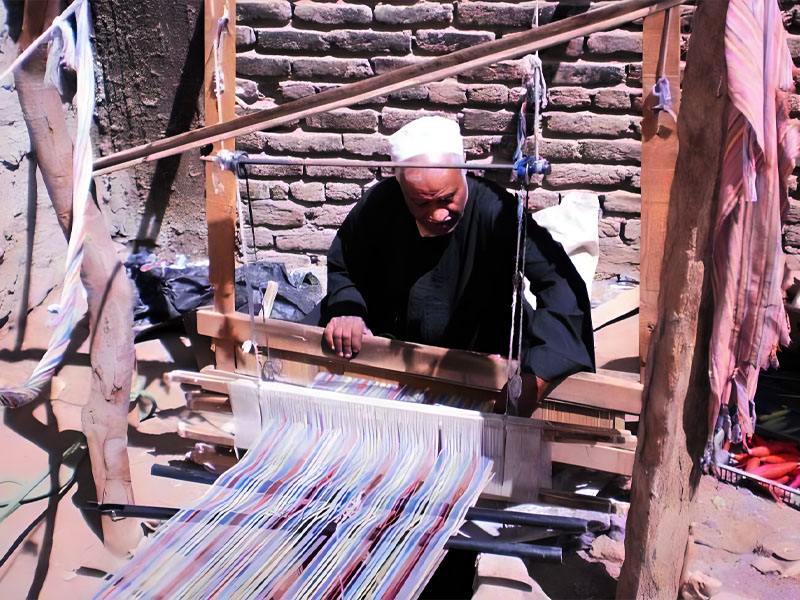The cultural heritage of the Firka industry
Issue 31

Abdul Latif Muhammad Ahmad Husain
EGYPT
This paper attempts to shed light on the industry of Firka, ”the making of traditional wedding gowns“, in Naqada, Egypt. The paper discusses Firka’s features, the reasons that the industry is located in Naqada, the historical and geographic factors that have helped it survive, and the challenges facing the industry. It also includes recommendations.

The Firka industry became famous in Naqada because experience accumulated from generation to generation, and because of the availability of raw materials such as linen, wool, cotton and natural and artificial silk.
About 40% of the region’s population, or 900 families, work in the industry. The workers are mostly women, because the work requires patience and is usually done at home.
The proximity of sources of raw materials such as cotton, linen and silk and the tourist markets of Luxor, Hurghada and Aswan helped to make Naqada a centre for Firka, giving the village an important source of income.
There are several stages: the raw material is transported to the workshop from Cairo and Sohag; the material is prepared and stretched on the loom; then the manufacturing begins. Most of the products are sold to the tourist markets.
This industry is the main source of income for most families in Naqada, and it provides around 3000 jobs. The value of the finished product is 29% of the final selling price, which is about 35 pounds per piece; middlemen get more than two-thirds of the final price.
The industry faces a number of challenges, including the high price of yarn, limited revenue, a lack of skilled labour, the fact that demand is linked to the tourist season, competition from China and India, and the monopoly of dealers and brokers.
Possible solutions include using Egyptian long-staple cotton, paying more attention to training centres, providing technical support to skilled workers, returning to the export of Sudanese Firka, providing protection for the industry’s products and regulating the markets.
The study concludes that Firka will flourish in the future, that quality will improve to meet demand, that there will be an increase in the number of textile products produced for the tourist market, and that there will be plans to connect textile industries with tourism development programmes.







































































